Disclosure: This article contains affiliate links. We may earn a commission from purchases at no extra cost to you, which helps our travel content.
The emerald-hued streets of Dublin have a way of captivating you from the moment you arrive. As someone who's spent years exploring ancient civilizations across continents, I've developed a deep appreciation for cities that seamlessly blend historical richness with modern convenience—and Dublin delivers this in spades. During my week-long research trip last autumn, I found myself marveling not just at the city's archaeological treasures but also at how surprisingly straightforward it was to navigate this compact Irish capital. Whether you're planning to trace Viking footsteps in medieval alleyways or sample craft beers in trendy Stoneybatter, understanding Dublin's transportation network is your key to unlocking authentic experiences without blowing your budget. Tá sé éasca go leor—it's easy enough—as the locals might say, but having the right information makes all the difference. Let me break down everything you need to know about getting around Dublin efficiently, affordably, and like someone who belongs.
From Airport to City: Your First Irish Journey
Landing at Dublin Airport after my 12-hour journey from Tokyo, I was admittedly bleary-eyed and concerned about navigating to my accommodation near Trinity College. I needn't have worried—Dublin makes this initial transition remarkably straightforward.
The most budget-friendly option is the public bus service. Dublin Bus routes 16 and 41 connect the airport to the city center for around €3.30, though they make numerous stops. I opted for the slightly pricier but more efficient Airlink Express (route 747), which costs €7 for a one-way ticket or €12 return. The journey takes approximately 30 minutes depending on traffic, and the buses are equipped with WiFi and luggage racks—perfect for catching up on messages or downloading your city map after the flight.
For those arriving during odd hours or with substantial luggage, taxis are readily available outside both terminals. Expect to pay €25-30 to reach the city center. I'd recommend having your destination pulled up on your phone, as I found some drivers more familiar with landmark names than specific street addresses.
If you're planning to explore beyond Dublin during your Irish adventure, consider renting a car directly from the airport. I used a car rental comparison site to find the best rate and avoid the airport counter upsells. Just remember that Ireland drives on the left—something that took this American-raised traveler a few nervous minutes to adjust to!
Whichever option you choose, I'd suggest exchanging a small amount of euros before arrival or withdrawing from the ATMs in the arrival hall, as having cash for initial transportation is always reassuring in a new city.
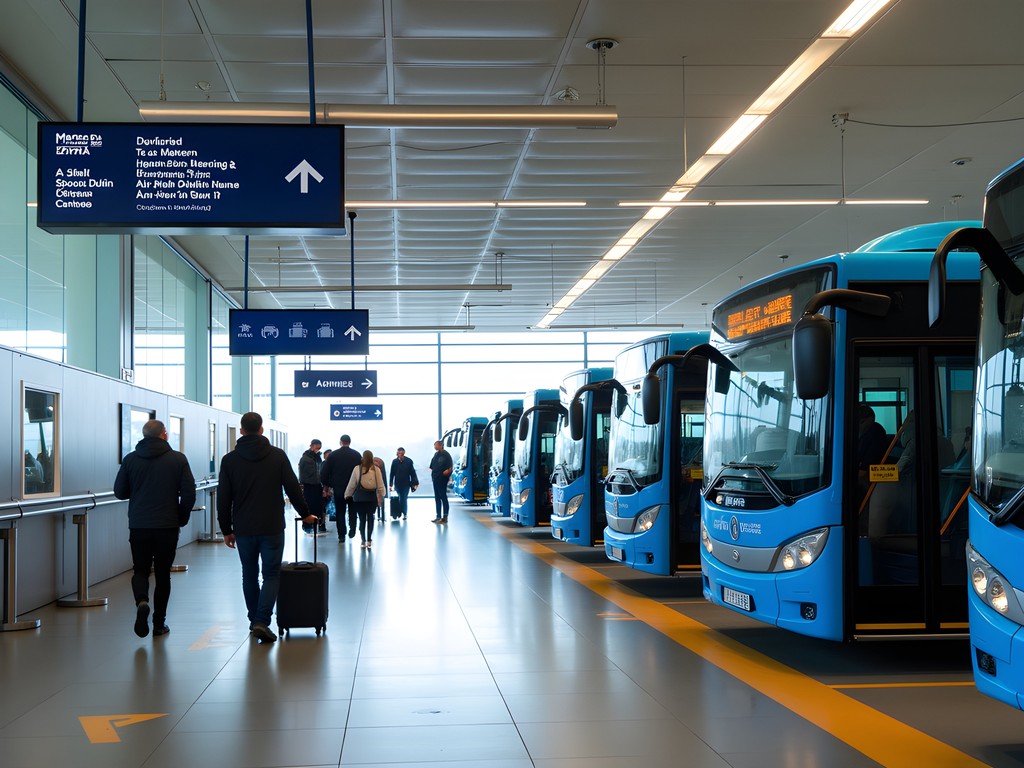
💡 Pro Tips
- Pre-book your Airlink Express ticket online for a small discount and guaranteed seat
- Download the Transport for Ireland app before landing to check real-time bus arrivals
- If taking a taxi, note that credit cards are widely accepted but confirm before starting your journey
Mastering the Leap Card: Dublin's Transport Swiss Army Knife
If there's one piece of advice I'd give any visitor to Dublin, it's to get a Leap Card immediately. This reloadable smart card is essentially your passport to efficient, cost-effective travel throughout the city and beyond.
Within hours of arriving, I purchased a Visitor Leap Card from a vending machine at Dublin Airport (they're also available at DART stations and select convenience stores). For €10 (1-day), €19.50 (3-days), or €40 (7-days), you get unlimited travel on Dublin Bus, Luas trams, DART trains, and commuter rail within the greater Dublin area. As someone who made at least 4-5 journeys daily while exploring different neighborhoods and archaeological sites, this card paid for itself by the second day.
The beauty of the Leap Card lies in its simplicity—no more fumbling for exact change or trying to decipher fare structures. On buses, you simply tap the card reader as you board and tell the driver your destination. For DART and Luas, tap at the station before boarding and again when exiting.
For my fellow data-tracking enthusiasts, I recommend downloading the Transport for Ireland app, which allows you to check your card balance and journey history. I paired this with my portable power bank to ensure my phone never died while navigating—a true lifesaver when you're trying to locate obscure historical sites off the typical tourist path.
If you're staying longer than a week, consider getting the standard Leap Card instead (€5 for the card itself, then you add credit). While you won't get unlimited journeys, you'll still save about 30% compared to cash fares, and any remaining balance can be refunded before you leave Ireland.
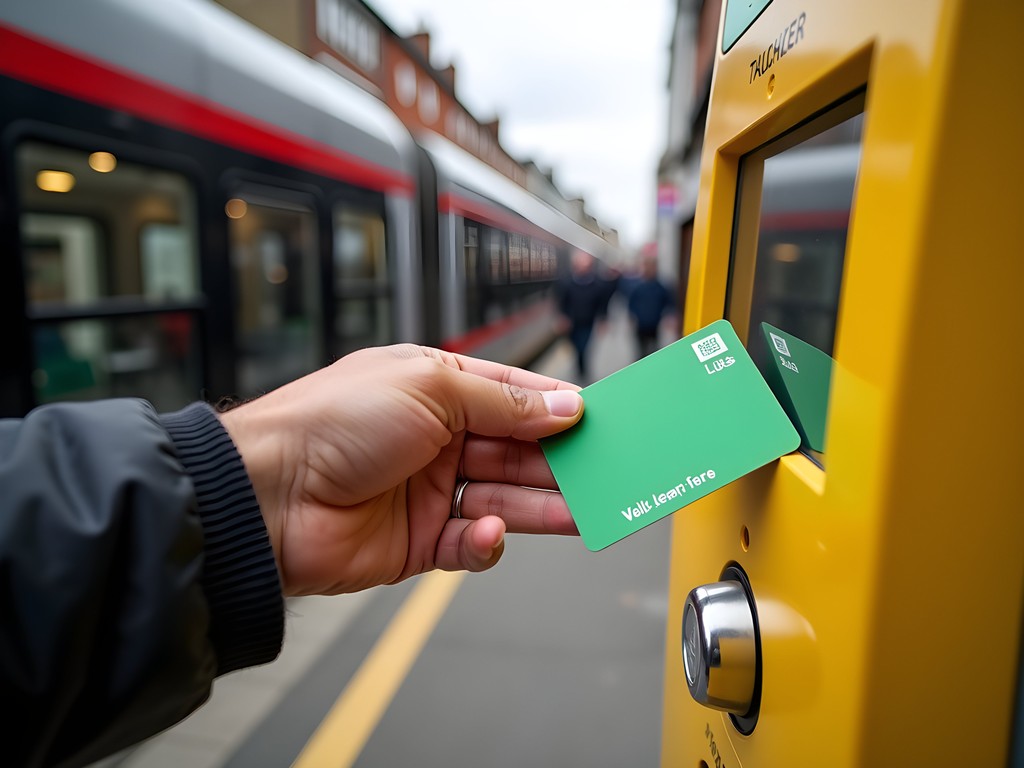
💡 Pro Tips
- Register your Leap Card online to protect your balance if the card is lost or stolen
- Always tap off when exiting DART and Luas to avoid being charged the maximum fare
- Keep your Leap Card away from other contactless cards to prevent interference when tapping
DART: Dublin's Scenic Coastal Railway
The Dublin Area Rapid Transit (DART) quickly became my favorite way to travel during my stay. This electric rail service runs along Dublin Bay, connecting coastal suburbs with the city center, and offers some of the most stunning views you'll find on any urban transit system.
The DART's north-south line runs from Howth and Malahide in the north to Greystones in the south, with frequent stops in the city center. Trains run approximately every 10-20 minutes during weekdays and every 15-30 minutes on weekends.
One particularly memorable day began with a DART journey to Howth, a charming fishing village just 30 minutes from the city center. The train hugged the coastline, providing spectacular views across Dublin Bay that had me constantly switching seats to capture photos from both sides. The journey itself became an experience rather than merely transportation—something I've found rare in major cities.
For history enthusiasts like myself, the DART offers convenient access to several significant sites. Dún Laoghaire station puts you within walking distance of the National Maritime Museum, while Dalkey offers a well-preserved medieval town center that I spent hours exploring. The connections to Ireland's Viking past were particularly fascinating, with settlement patterns clearly influenced by the coastal geography.
Practical considerations: DART stations have ticket vending machines, but using your Leap Card is more convenient and cost-effective. Trains can get crowded during rush hour (approximately 8-9:30am and 5-6:30pm), so plan accordingly if you're traveling with luggage. Most stations have elevators, making them accessible for travelers with mobility concerns.
I'd recommend packing a compact travel umbrella when taking the DART to coastal destinations. The weather can change rapidly along the coast, and I was caught in a sudden shower while exploring Howth's cliff path—a rookie mistake for someone who should know better after years of fieldwork in unpredictable conditions!
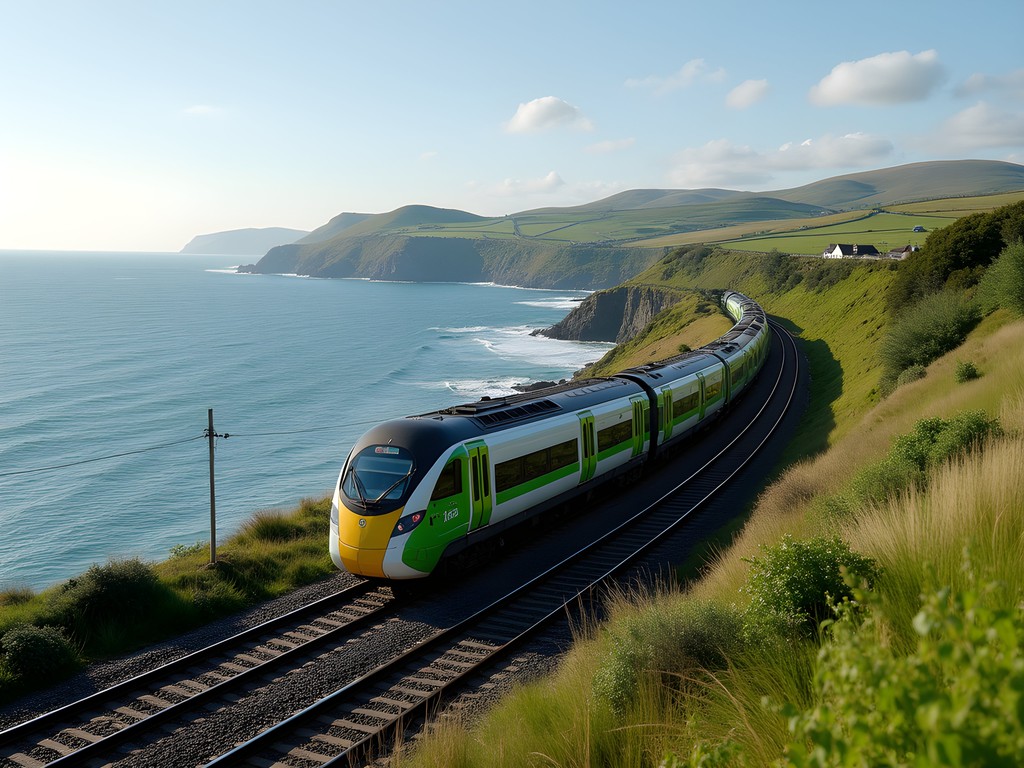
💡 Pro Tips
- Sit on the left side when traveling north and the right side when traveling south for the best sea views
- Download the Irish Rail app for real-time DART schedules and platform information
- Consider taking early morning DART trips to popular destinations like Howth to avoid weekend crowds
Luas Trams & Dublin Bus: The Urban Network
While the DART connects coastal areas, Dublin's inner-city transportation relies heavily on the Luas tram system and Dublin Bus network—both of which I found remarkably efficient for a city of this size.
The Luas (Irish for "speed") consists of two tram lines: the Red Line running east-west from Tallaght/Saggart to The Point, and the Green Line running north-south from Broombridge to Bride's Glen. The lines intersect at O'Connell Street and Abbey Street, creating a convenient transfer point. During my research visits to the National Museum of Ireland's multiple branches, I frequently used the Luas Green Line, appreciating its predictable schedule and smooth ride.
Trams arrive every 3-10 minutes during peak hours and 10-15 minutes during off-peak times. The digital displays at each stop provide real-time arrival information, and the trams themselves are modern, clean, and wheelchair accessible. One aspect I particularly appreciated was the clear audio announcements in both English and Irish—a small but meaningful nod to cultural preservation that resonated with my academic interests.
For areas not served by DART or Luas, Dublin Bus provides comprehensive coverage with over 200 routes. While initially intimidating (the bus network map resembles a complex circuit board), I quickly learned to navigate it using the Transport for Ireland app, which provides real-time arrival information and journey planning.
Bus stops display route numbers and final destinations, though not all have electronic displays. When boarding, simply tap your Leap Card and tell the driver your destination. One quirk to note: on most routes, you'll need to request your stop by pressing the bell button before your destination.
For evening exploration of Dublin's famous pub culture, I found the Nitelink service invaluable—these late-night buses operate on Friday and Saturday nights from midnight until 4am. After a traditional music session in Temple Bar that ran later than expected, the €6.60 Nitelink fare was well worth avoiding a pricier taxi.
During busy sightseeing days, I relied on my crossbody travel bag to keep my essentials secure yet accessible while navigating these public transit options. The anti-theft features provided peace of mind in crowded trams and buses, while the compact size didn't mark me immediately as a tourist.

💡 Pro Tips
- Stand at the right side of escalators on the Luas to allow locals to pass on the left
- On Dublin Bus, wave at the approaching bus to ensure it stops, especially at less busy stops
- Download the TFI Journey Planner app for comprehensive route planning across all transport modes
Dublin Bikes & Walking: Experiencing the City at Ground Level
For an anthropologist like myself, nothing beats experiencing a city at street level, where cultural nuances and historical layers reveal themselves in unexpected ways. Dublin's compact city center makes it ideal for exploration by foot or bicycle.
Dublin Bikes, the city's bike-sharing scheme, became my preferred mode of transportation after I discovered how easily it connected the various archaeological sites I was researching. With over 100 stations throughout central Dublin, you're never more than a few minutes from a docking station. A 3-day ticket costs just €5, with the first 30 minutes of each journey free (perfect for short hops between attractions).
Registering requires a credit card, but the process is straightforward via the NOW Dublinbikes app. The app also shows real-time availability of bikes and docking spaces—crucial information during busy periods. I found mornings and late afternoons particularly competitive for bike availability near popular areas like St. Stephen's Green.
The bikes themselves are sturdy city cruisers with adjustable seats, lights, and a small basket for personal items. While Dublin has been improving its cycling infrastructure, be prepared for sections without dedicated bike lanes. As someone accustomed to Tokyo's orderly cycling culture, I initially found Dublin's traffic a bit intimidating, but quickly adapted by following local cyclists' lead.
For those who prefer walking, Dublin rewards pedestrians with its manageable scale—most major attractions in the city center lie within a 20-30 minute walk of each other. The River Liffey serves as a helpful reference point, dividing the city into northside and southside. Distinctive spires and landmarks like the Millennium Spire on O'Connell Street provide useful orientation points.
During my research walks between Trinity College and the archaeological exhibits at Dublin Castle, I discovered countless hidden courtyards, street art, and architectural details that would have been missed from a bus window. These walks became impromptu field surveys, revealing how the city's Viking and medieval foundations still influence modern urban patterns—a fascinating parallel to similar studies I'd conducted in Kyoto.
For longer walking days, I relied heavily on my waterproof hiking shoes. Dublin's notorious rain showers can appear without warning, and these kept my feet dry while providing enough support for 15,000+ step days exploring the city's historical layers.

💡 Pro Tips
- Use the pedestrian crossings with patience - Dublin drivers respect them, but may take their time to stop
- When cycling, be particularly careful of tram tracks which can catch bike tires - cross them at right angles
- The Ha'penny Bridge and other pedestrian bridges offer both convenient river crossings and excellent photo opportunities
Day Trips Beyond Dublin: Expanding Your Irish Experience
While Dublin offers endless exploration opportunities, some of Ireland's most fascinating historical sites lie just beyond the city limits. Fortunately, the transportation connections make day trips remarkably accessible, even for budget travelers.
During my week in Dublin, I dedicated two days to exploring further afield, starting with the ancient monastic site of Glendalough in the Wicklow Mountains. Rather than joining an expensive tour group, I took the St. Kevin's Bus Service from Dublin's Dawson Street (€20 return), which operates year-round with a journey time of approximately 1.5 hours each way. The early morning departure allowed me a full day exploring the 6th-century monastery and hiking around the stunning glacial lakes.
For those interested in Ireland's prehistoric monuments, Newgrange in the Boyne Valley presents an unmissable opportunity to visit a passage tomb older than the Egyptian pyramids. Public transportation requires some planning—I took the train from Dublin Connolly to Drogheda (covered by my Leap Card), then a local bus to the visitor center. While slightly more complicated than a guided tour, this DIY approach saved me around €30 and allowed for a more flexible schedule.
Irish Rail also offers several scenic routes ideal for day trips. The journey to Belfast takes just over two hours and crosses the border into Northern Ireland (remember to carry your passport). Alternatively, the coastal train to Wexford provides stunning sea views and access to beautiful beaches—a welcome contrast to city exploration.
For destinations with limited public transport access, consider Dublin's numerous tour operators. While typically more expensive than independent travel, they provide transportation to remote sites like the Cliffs of Moher or Giant's Causeway that would otherwise require car rental. I found that booking these tours mid-week often secured better rates than weekend departures.
When planning day trips, I relied heavily on my travel daypack which proved perfect for carrying rain gear, water, snacks, and my field notebook. Its compact size meant it wasn't cumbersome on public transport, while the hydration sleeve and multiple pockets kept everything organized during long days of exploration and documentation.

💡 Pro Tips
- Book popular day trip tours at least 2-3 days in advance, especially during summer months
- For train journeys, book online via Irish Rail's website for discounted advance fares
- Check weather forecasts before departing—conditions at coastal and mountain destinations can differ significantly from Dublin city
Final Thoughts
As I boarded my flight back to Tokyo, reflecting on my week navigating Dublin's transportation network, I realized how much this city rewards the curious traveler willing to explore beyond the tourist shuttle buses. From the coastal DART journeys revealing centuries of human settlement patterns to the bike rides that connected me physically to Dublin's Viking street layout, each mode of transport offered a different lens through which to understand this layered city. For solo travelers especially, mastering Dublin's public transportation unlocks authentic experiences at a fraction of the cost of guided tours. So grab your Leap Card, download the transport apps, and prepare to discover Dublin not just as a collection of attractions, but as a living urban landscape where history and modernity travel side by side. Slán go fóill, Dublin—until we meet again on your efficiently connected streets.
✨ Key Takeaways
- Invest in a Leap Card immediately upon arrival for significant savings and convenience across all transport modes
- The DART train offers both practical transportation and scenic coastal views worth experiencing
- Dublin's compact center makes walking and cycling viable options for most city exploration
- Public transportation can connect you to significant historical sites beyond Dublin, often at substantial savings compared to organized tours
📋 Practical Information
Best Time to Visit
year-round, though May-September offers milder weather for walking and cycling
Budget Estimate
€30-50 per day for transportation including day trips
Recommended Duration
5-7 days
Difficulty Level
Easy

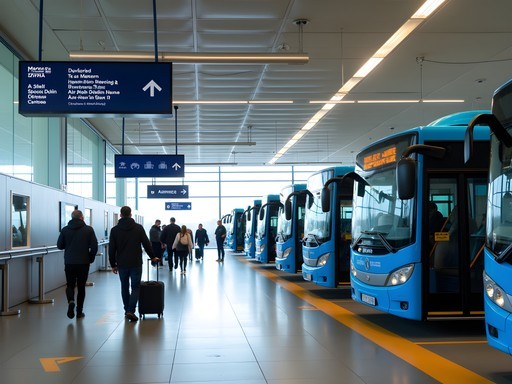
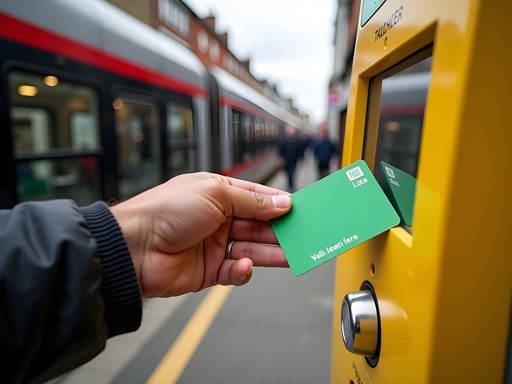
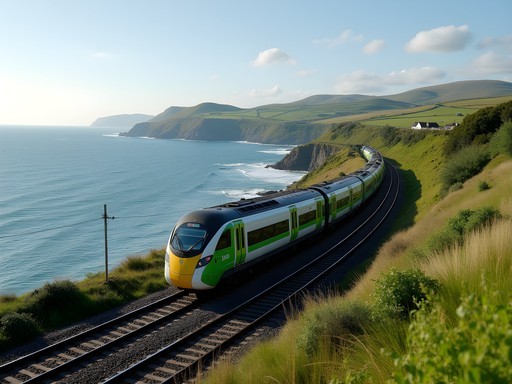
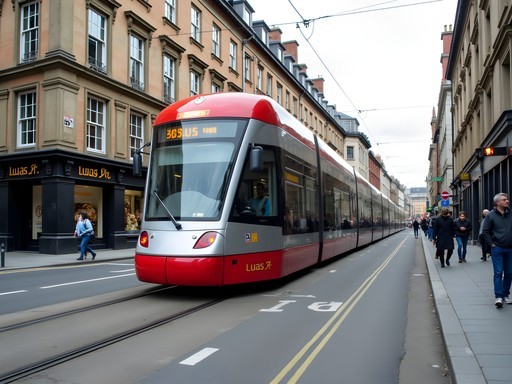







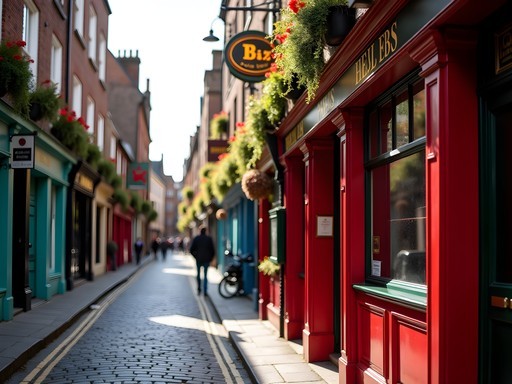




Comments
backpacknomad
Pro tip: Aircoach from airport to city center runs 24/7 and has WiFi. Saved me when my flight arrived at midnight!
islandrider
Used DART to Bray last week - stunning coastal views! Worth it just for the scenery.
sunnylover
Is the Leap Card worth it if I'm only in Dublin for 2 days? Planning to see Trinity College, Guinness Storehouse, and maybe take a day trip to Howth.
Hayden Ward
For just 2 days with those destinations, I'd still recommend it! The Visitor Leap Card comes in a 1-day or 3-day option. For Howth especially, you'll save on the DART fare, plus you can use it for the bus to Guinness. Pays for itself quickly and saves the hassle of buying individual tickets.
Gregory Boyd
Excellent breakdown of Dublin's transport options, Hayden. After 15+ visits to Dublin over the years, I've found the key to mastering the city is understanding the bus network - it reaches places the Luas simply doesn't. One crucial tip I'd add: download the Transport for Ireland app before arrival. It integrates all transport modes and provides real-time updates. Also, for those staying longer than a weekend, consider where you're lodging carefully. Staying near the Red or Green Luas lines can dramatically improve your mobility. For my money, the area around Ranelagh gives you great access while being quieter than the city center. I always travel with my pocket guide which has excellent transport maps that work offline.
greenblogger
Dublin Bikes saved us so much time! We stayed near St. Stephen's Green and used them daily to zip around the city center. The app makes it super easy to find docking stations. Just be careful with timing - they charge extra if you go over 30 minutes, but there are enough stations that you can usually dock and grab a new bike to reset the clock. Also found that the DART to Dun Laoghaire makes for a perfect half-day escape from the city bustle!
sunnylover
Did you need a special pass for Dublin Bikes or can you just pay as you go?
greenblogger
You can get a 3-day ticket online before you go! Much easier than the pay-as-you-go option which requires a European credit card.
Amit Sullivan
Hayden, your guide brought back wonderful memories of my time in Dublin last autumn! The DART truly is a gem - I took it out to Howth on a misty morning and had the most magical seafood lunch after hiking the cliff path. One tip I'd add for visitors: if you're staying more than 3 days, the 7-day Leap Card is tremendous value. Also found the Dublin Bus app invaluable for real-time arrivals when the weather turned foul (as it inevitably does in Ireland). The buses may not be glamorous, but they'll get you to corners of the city that reveal its true character.
roamninja7944
Just what I needed! Heading to Dublin next month and was stressing about getting around. Leap Card sounds like a must-have!
Amit Sullivan
Definitely get the Leap Card on day one! Saved me countless hassles and a fair bit of money too.
roamninja7944
Thanks for confirming! Will grab one at the airport.
vacationchamp
Is it worth getting a Leap Card for just a 3-day visit? Or should we just pay as we go?
moonmood
Definitely get the Leap Card! Even for 3 days it saves money and hassle. No need to carry coins everywhere.
Bryce Diaz
This brought back memories! I spent two weeks in Dublin last fall and became a transport expert by necessity. One thing I discovered that wasn't mentioned: if you're staying outside the city center, check if you're near a Dublin Area Rapid Transit (DART) station. I stayed in Dun Laoghaire and commuting along the coast each morning was the highlight of my trip - that coastline view never gets old! Also worth noting that if you're planning day trips, sometimes the regional buses (like Dublin Bus routes 44, 145) are better than trains for places like Glendalough. I carried my travel journal everywhere and filled it with ticket stubs and route maps - best souvenir ever!
starguide
Going to Dublin with my parents (70+) next month. Which transport option would be best for them? They can walk but not too far.
Bryce Diaz
I took my mom (72) last year and we found the Luas tram super easy for her - stations are accessible and not too far apart in the city center. For longer trips, Dublin Bus was good too, just make sure to get the Leap Card so they don't have to fumble with change. The buses announce stops which helped a lot!
Venture X
Premium card with 2X miles, $300 travel credit, Priority Pass